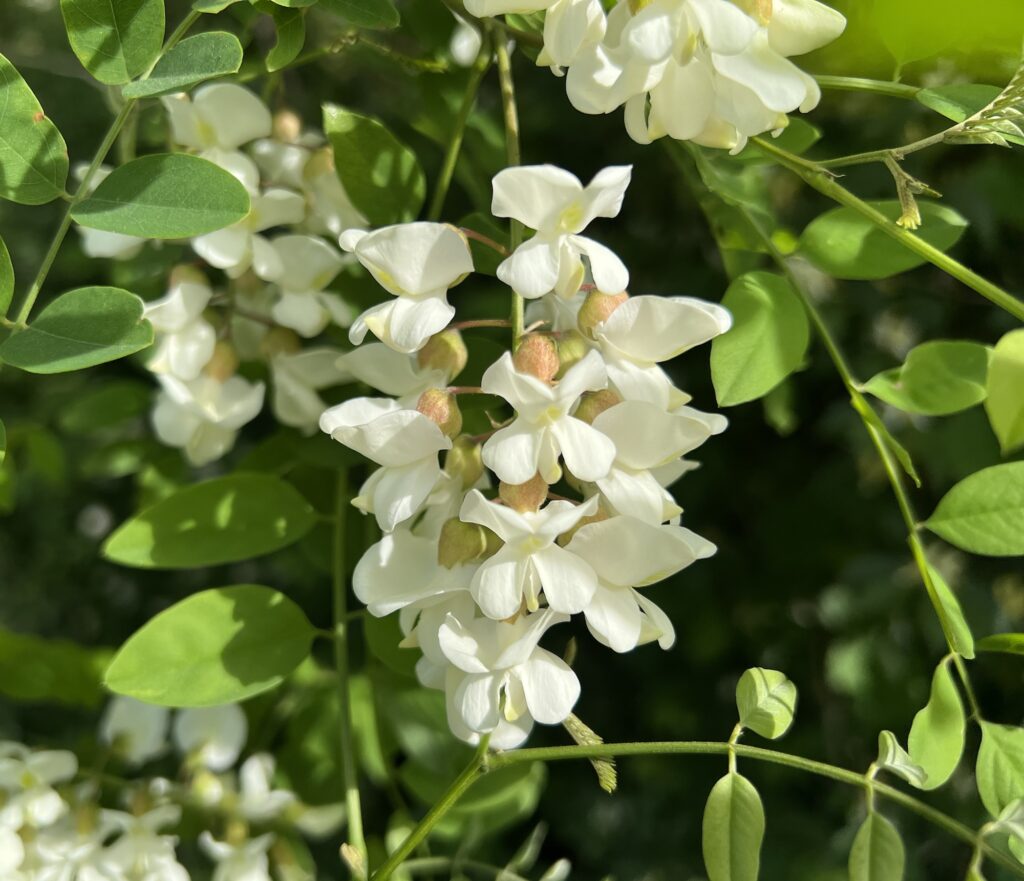
That delighful fragrance wafting in the humid evening breeze is a telltale sign that flowers are blooming on the farm. When I smell that wonderful perfume, I take time to soak it in…and then I start making plans. Last year, I had planned to make Black Locust Flower wine, but missed the bloom. This year, we had a bumper crop of Black Locust blooms!
Black Locust trees grow naturally in our region. At first glance, they may look rather nondescript, with heavily textured bark that reminds me of black walnut. Ours grow primarily along our fence line, where they’ve been left alone (probably due to the difficulty in reaching them) over the years, growing into very tall trees. When those plain, homely trees burst into flower, they are transformed. Dripping with creamy blooms, they are a welcome sight (and smell) for noses starved by the austerity of the previous seasons.

This year, we harvested at the peak of the bloom. It was (naturally) a hot and humid day, and their fragrance was heavy in the air, mixing with the smells of blooming blackberries, wild roses, and bush honeysuckle. While our small, young trees were also loaded with flowers, we chose to harvest from the much larger, older trees.
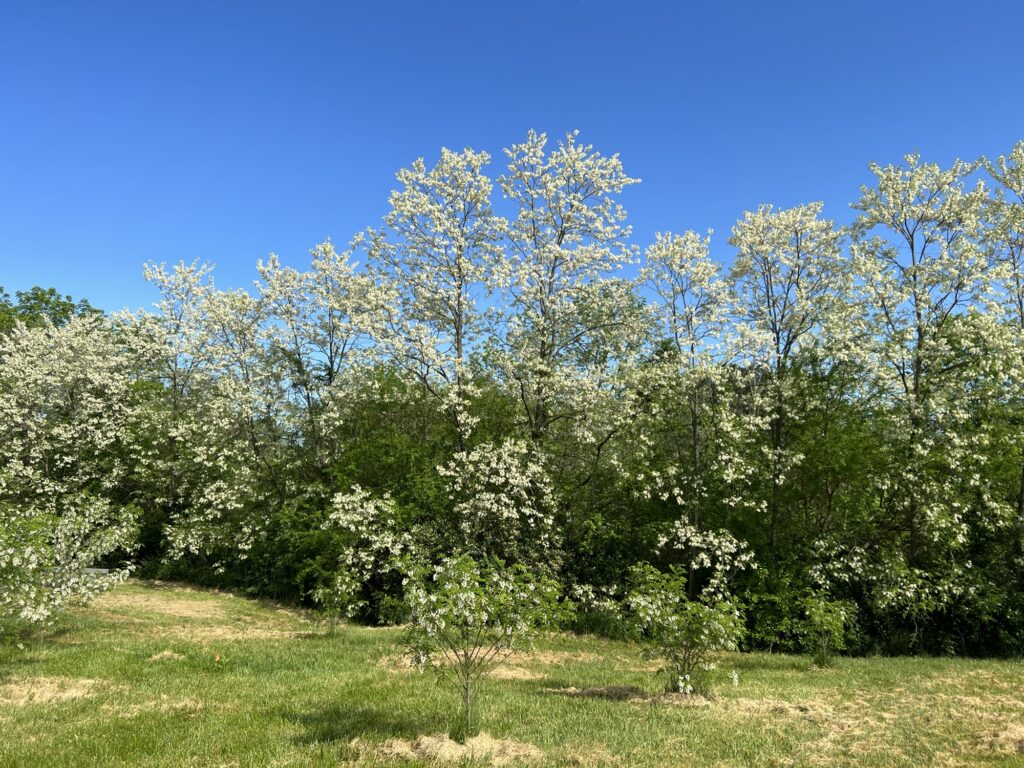
The lowest limbs were close enough for us to reach easily and clip off the clusters of flowers. We soon had a 5 gallon bucket full of the blooms.
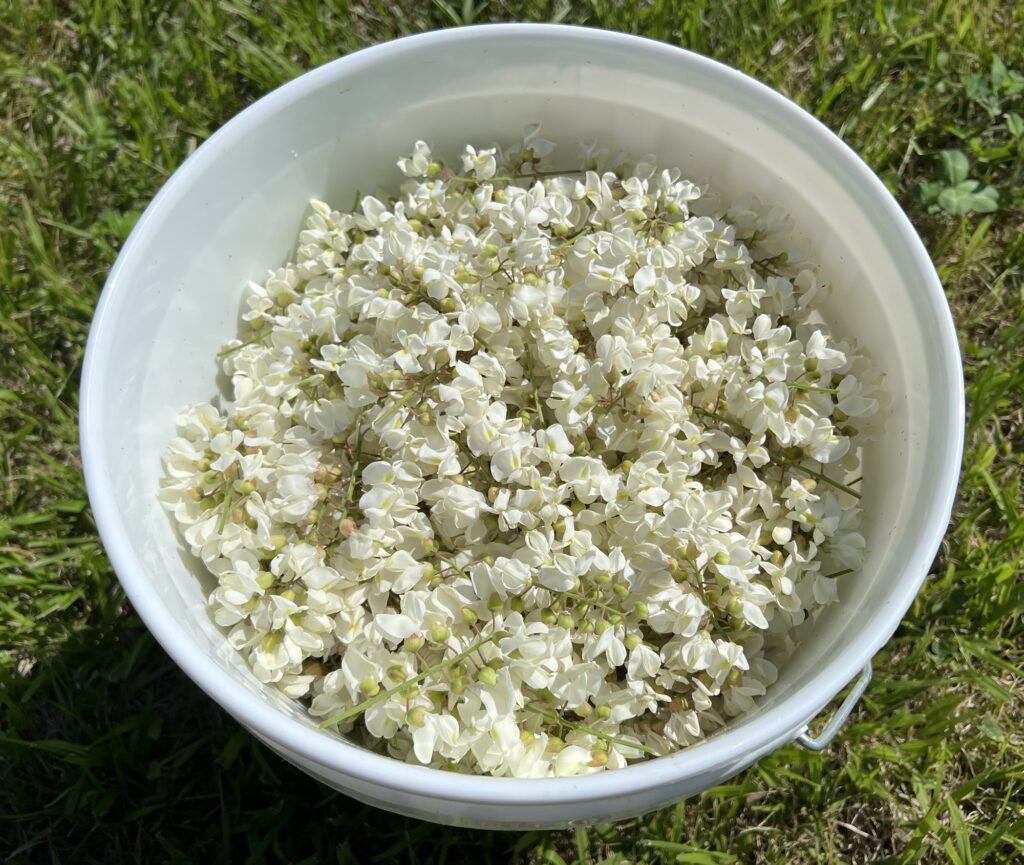
As with all of the flowers I harvest here, they were host to many different kinds of insects and spiders. I like to leave the flowers for a few hours to give the creatures living in them time to leave. Many of the spiders, in particular, climbed to the top of the bucket and clung to the underside of the lid, where I was able to easily relocate them.
Once the blossoms’ inhabitants had a chance to vacate, I started the wine. The first step in the process is to make an infusion from the flowers. I boiled several gallons of filtered water and poured it over the blossoms and sliced oranges, and let it steep for a couple of days.
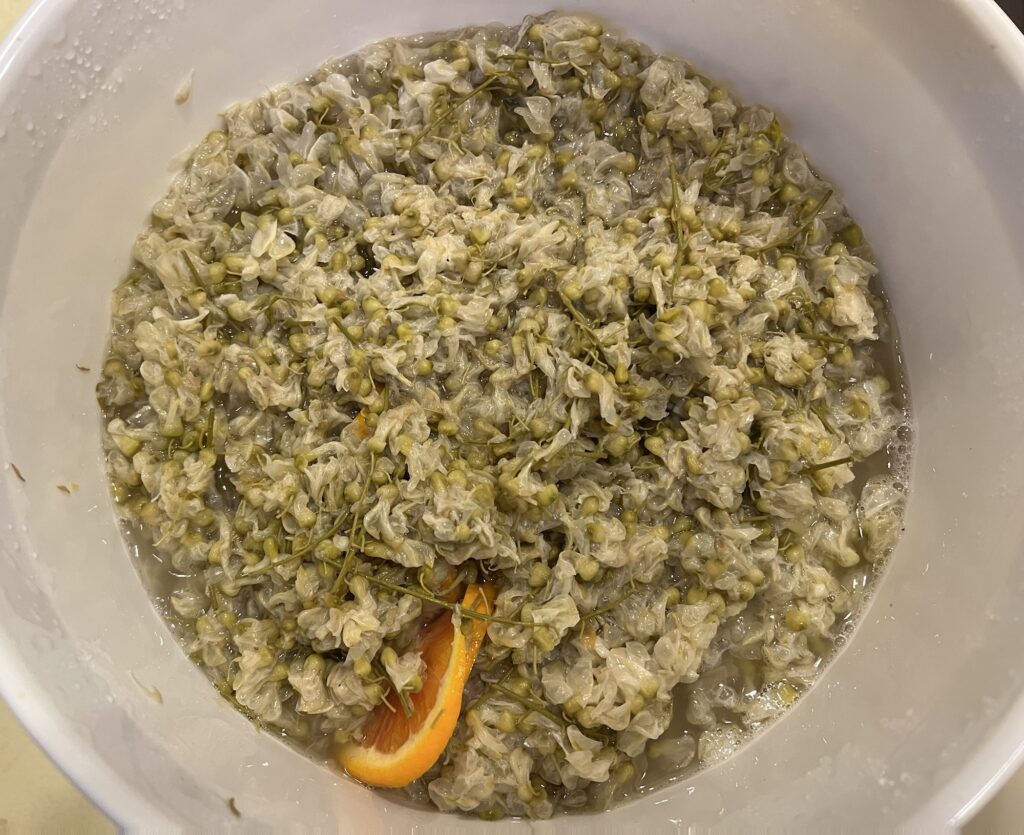
After the steeping time had elapsed, I strained out the spent blooms and orange. The “tea” retained the characteristic fragrance, which I’m fervently hoping will also remain pronounced in the finished wine.
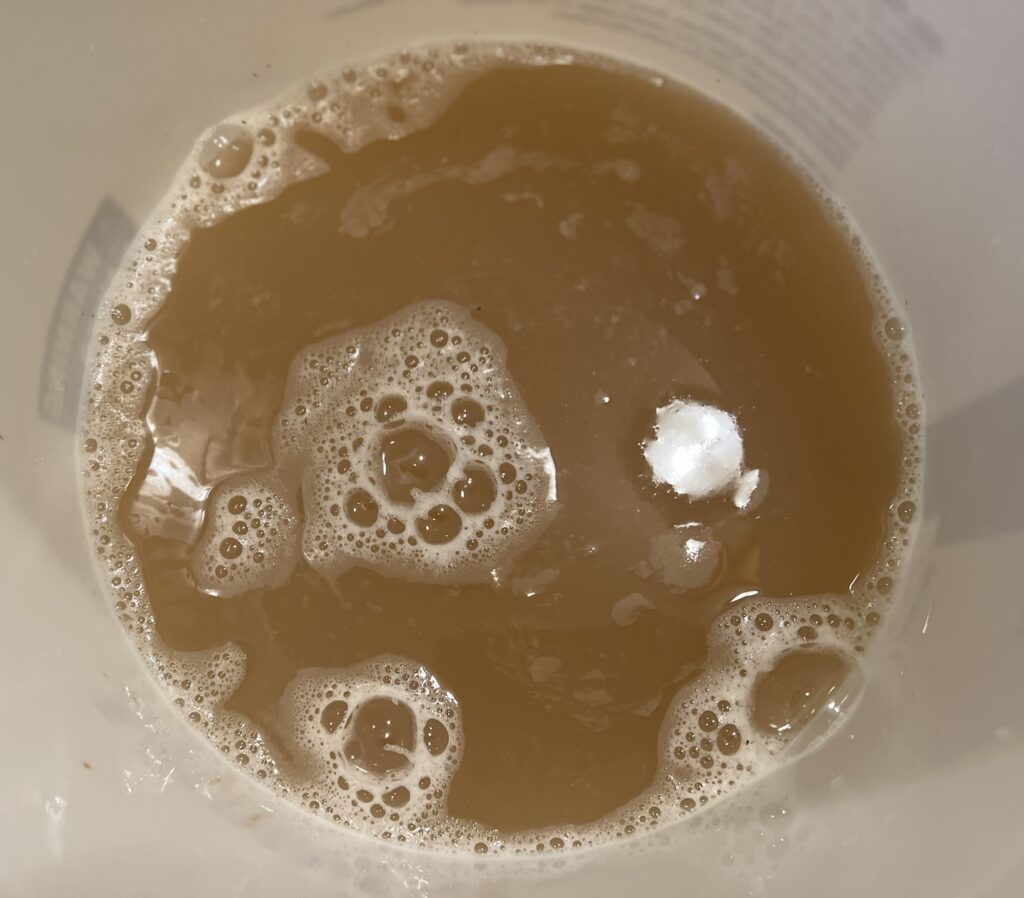
While the straining was occurring, I was also heating filtered water in a stockpot. Once it was hot, I added the sugar and stirred well to dissolve it, poured it into the bucket with the flower tea, and added acid, yeast nutrient, apple juice, and water to bring it to 5 gallons. Once it had cooled, I poured in a packet of wine yeast.


Over the next 5 days, I stirred the must daily. The foamy cap on top is evidence of an active ferment. And when I lift the lid, that very special perfume still greets me.

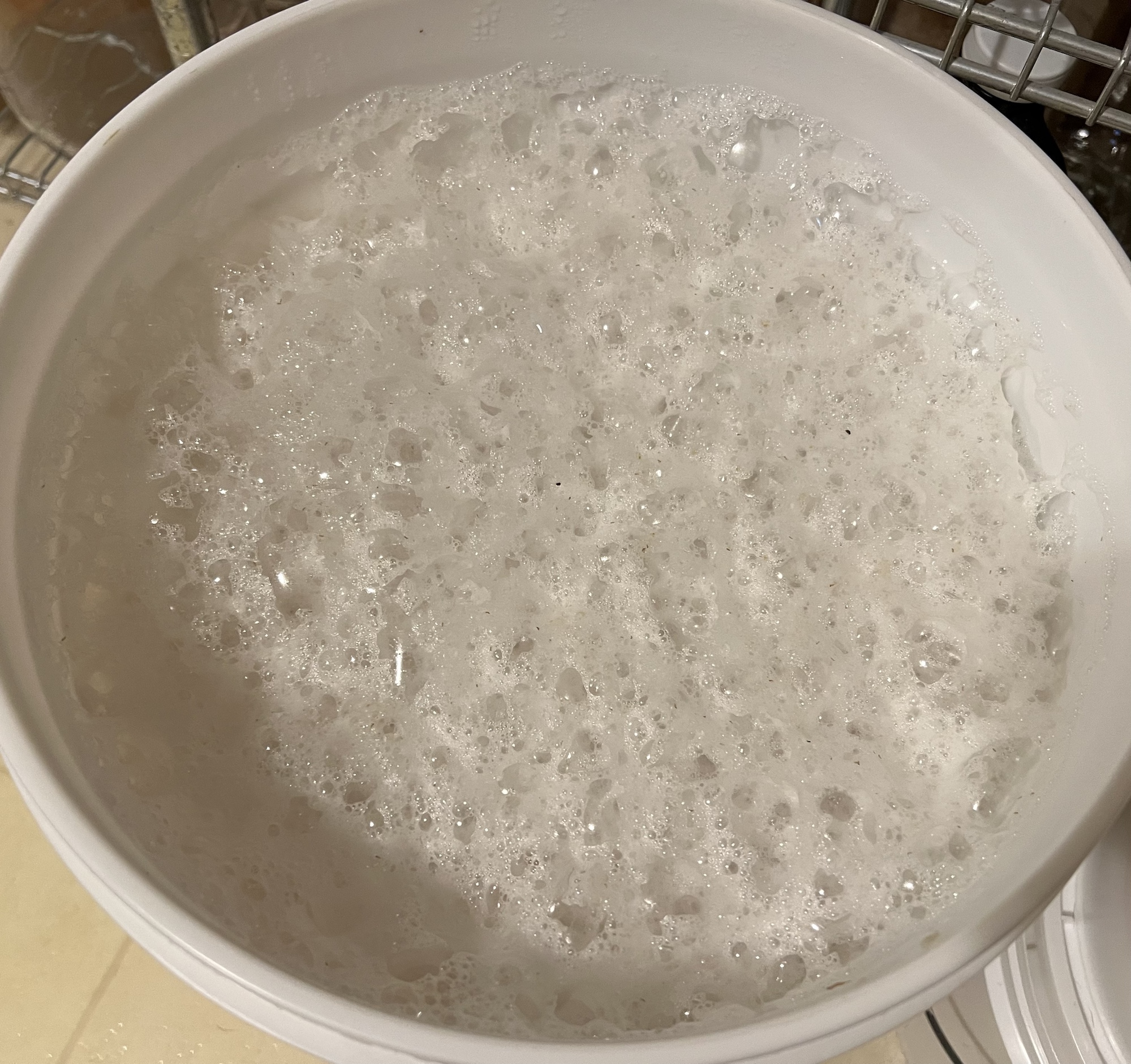
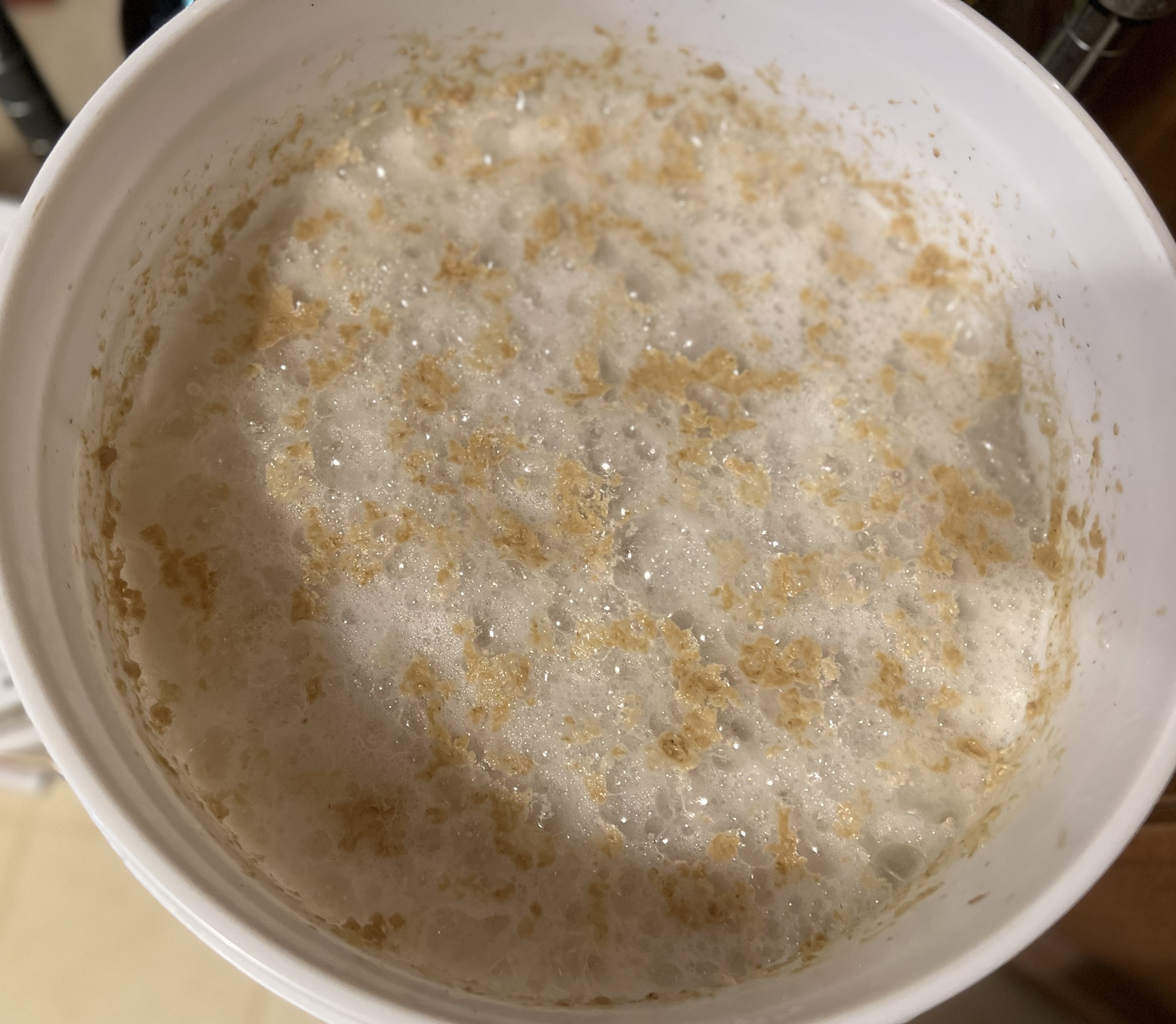
After the five days had elapsed, I transferred the wine to a carboy with an airlock for it to finish its ferment. If all goes as planned, this iteration should result in an aromatic, crisp, and unique wine. I’ve made modified the recipe upon which this is based, and one alteration is to replace the sliced lemon with citric acid, to try to balance the citrus and prevent citrus oils from creating bitter notes.

Though the bloom was brief, it was bountiful. Looking at the trees now, it seems slightly surreal that they were festooned with flowers mere weeks ago. It makes me glad I siezed the opportunity to collect some blooms when I did.
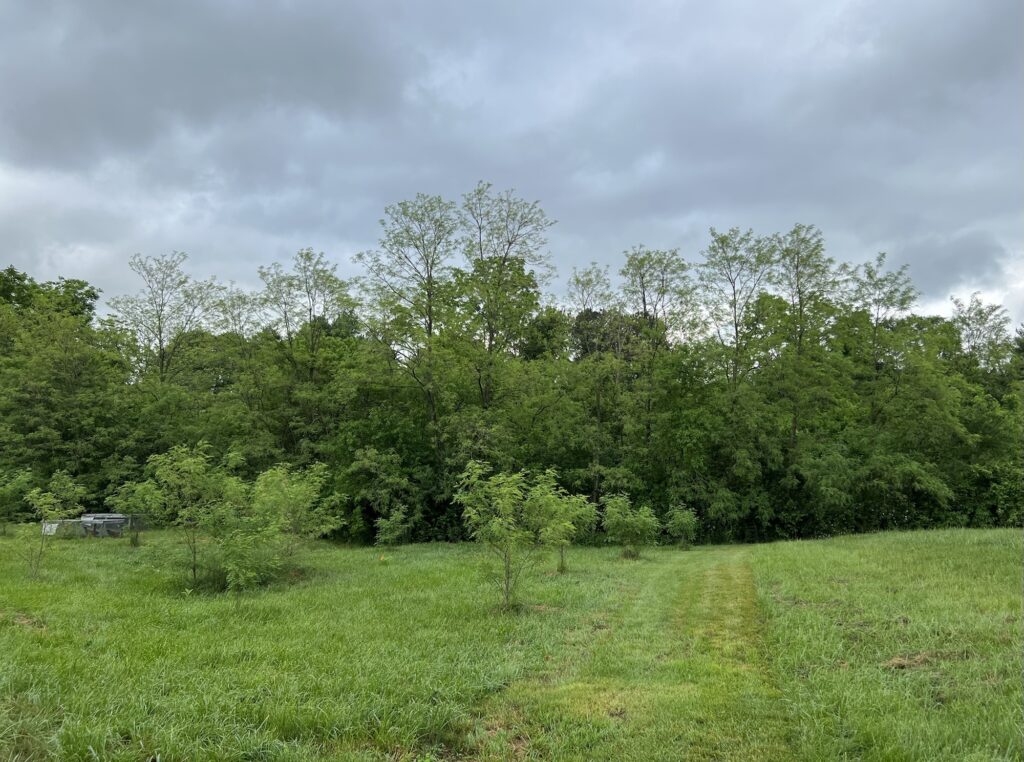
Using the abundant Black Locust flowers to create a truly unique wine is one of the rewards of foraging, but it’s critically important to remain mindful of the impact of foraging on others, including animals. When foraging, we ensure that we leave plenty behind for the wildlife as well as for the plants themselves. Practice safe and responsible foraging. Learn more about ethical foraging here.
